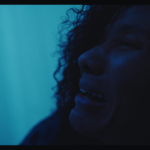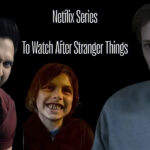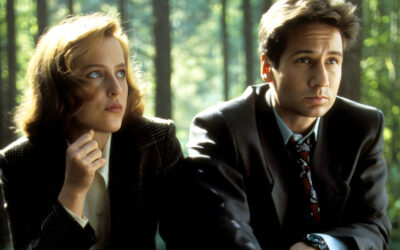Step into the shadows of anime with our guide to 8 terrifying horror series that blend cosmic dread, body horror, and psychological fear.
Horror isn’t confined to creaking floorboards and found-footage cameras. In anime, terror slips through cracks that live-action can’t always reach—warped perspectives, impossible anatomy, whole realities folding in on a single scream. If you’re a HorrorFuel reader who lives for dread that lingers, these eight series aren’t just “good for anime.” They’re capital-H Horror—psychological, supernatural, and savagely human.
Below, each pick includes the type of fear it evokes, why it resonates with horror fans, a brief “scare scale,” and content notes so you can choose your poison wisely.
1) Tokyo Ghoul — Cannibalistic Identity Horror
Humanity fractures. Flesh contorts. Hunger becomes a whisper you can’t ignore. In Tokyo Ghoul, a gentle student is thrust into a world of cannibal monsters. But this isn’t spectacle—it’s identity ripped apart at the seam. Every gaping maw is a moral question made flesh. You don’t just watch the horror. You feel it take root.
Its bleak style has become a touchstone, inspiring art and design far beyond the anime itself, including the Tokyo Ghoul collection of themed creations.
The vibe: Body horror and moral rot. After a freak encounter, a shy college kid becomes half-ghoul—able to pass as human but forced to feed like a monster.
Why it terrifies: The show weaponizes empathy. You don’t watch a monster stalk the streets; you watch a good person negotiate hunger no one should have. Violence hits hard because it’s never just action—every fight is a test of self.
Why we think you will like it: Think The Fly meets Let the Right One In: transformation horror with romantic tragedy and urban paranoia.
Scare scale: 8/10 (graphic violence, sustained dread)
Content notes: Gore, cannibalism, torture

2) Another — Cursed-Classroom Ghost Story
A classroom exhales dread. A joke, a nod, a scream—then the end. Another is not about reason. It’s about inevitability. A dead classmate steps back, and everyone else follows. It’s your skin crawling in empty hallways. It’s fate with a tragic fashion tip.
The vibe: Classic Japanese ghost tale reimagined as a slow suffocation. A transfer student arrives in a rural town where one class is quietly “off”—and the body count rises in unnerving “accidents.”
Why it terrifies: It’s that old-school dread: brittle silence, a hospital that hums too loudly, the sense that your classmates are lying to be kind. When violence erupts, it’s shocking precisely because the show spends so much time whispering.
Why we think you will like it: If you like the patience of The Ring or the fatalism of Final Destination, this blends both into a single, cursed mystery box.
Scare scale: 7/10 (atmospheric dread with sharp spikes)
Content notes: Violent deaths, self-harm themes

3) Corpse Party: Tortured Souls — Trapped-School Splatter
The building breathes. Walls remember. Flesh trembles under midnight rituals. Corpse Party isn’t mass-market horror—it’s a psyche-sized chamber of lingering screams. School corridors trap memories and pain. Every friendship becomes a threat. Trust fractures with each heavy step.
The vibe: An after-hours “friendship charm” goes wrong, and a group of students are dropped into a haunted school that feeds on pain. This is the one you put on when you want to test your limits.
Why it terrifies: It’s a relentless loop of isolation → hope → cruelty. The school feels like an organism that reorganizes itself around your worst fear. The killings are explicit, but the show’s nastiest trick is how it turns friendship promises into weapons.
Why we think you will like it: It’s the spiritual cousin of Hellraiser and Saw—not thematically, but in its willingness to stare into the gore and ask, “Still with us?”
Scare scale: 9/10 (extreme content)
Content notes: Graphic gore, child endangerment

4) Berserk — Cosmic Horror Inside a Dark Fantasy
You’ve fought your way through war. And then the cosmos sneers. Berserk turns the battlefield into a mirror reflecting the universe’s cruelty. Blade to bone, body to spirit, everything becomes evidence of cosmic betrayal. And then the real horror unfolds: knowing you were never winning.
When the mask drops, it’s one of horror’s great “you can’t unsee this” moments—and that atmosphere has inspired everything from fan art to collectibles. For those who want to carry a piece of that dread into their space, the Berserk collection channels the series’ brutal aesthetic.
The vibe: A mercenary survives a medieval war machine only to learn the universe is rigged by inhuman, smiling gods. It starts as brutal sword-and-siege and mutates into sacrificial nightmare.
Why it terrifies: Berserk’s horror is existential. The monsters are ghastly, yes, but the true fear is destiny—the revelation that your victories were bait. When the mask drops (and it does), it’s one of horror’s great “you can’t unsee this” moments.
Why we think you will like it: If The Witcher flirted with Event Horizon, you’d get this blend of grime, grief, and cosmic indifference.
Scare scale: 8.5/10 (oppressive despair, brutal violence)
Content notes: Gore, sexual violence, ritual sacrifice

5) Shiki — Vampirism as Social Collapse
When the night comes, the village turns predator. It starts with deaths that look simple. But Shiki reveals the heartbeat beneath the moss—the sick symmetry of tradition. The horror isn’t the monsters. It’s the quiet acceptance. The chilling glance that says, “Yes, we knew.”
The vibe: A quiet village begins losing people, one pallid face at a time. Authorities rationalize; neighbors blame the heat; funerals multiply. Then the night knocks.
Why it terrifies: Shiki refuses easy morality. When the “why” is finally clear, the horror turns on everyone—victims, perpetrators, bystanders. It’s a dissertation on how communities rationalize evil until it’s too late.
Why we think you will like it: Fans of ’Salem’s Lot will love the slow civic rot; fans of The Wicker Man will hear the same uneasy hymn of tradition used as a gag.
Scare scale: 7.5/10 (slow-burn paranoia to bloodbath)
Content notes: Gore, child death, mass violence

6) Paranoia Agent — Urban Folklore and Collective Delusion
These city streets are meant to carry tension, not shouts. A kid with a bat roams. What’s real cracks. In Paranoia Agent, the city waits until the story pulls from your mind its darkest folds. The dread grows from what’s whispered—not shown.
The vibe: A city sees a rash of assaults by a golden-bat kid on rollerblades. He might be real. He might be stress. Either way, the stories crack open and something sick spills out.
Why it terrifies: Satoshi Kon doesn’t jump-scare you—he disorients you. Hallways bend; timelines slip; cheerful mascots leer too long. The monster isn’t the assailant; it’s the psychological shortcuts people take to dodge responsibility.
Why we think you will like it: If you’re into Perfect Blue or the “urban myth made flesh” energy of Candyman, this is your cerebral, reality-warping fix.
Scare scale: 6.5/10 (unsettling more than graphic)
Content notes: Suicide, assault, social collapse themes

7) Higurashi: When They Cry — Cute Mask, Cannibal Smile
This smiling village hides screaming logic. Higurashi is an ouroboros of dread—cute festivals return to bloodshed. Every loop drags you deeper. Familiar faces shift. Trust burns. And still, you keep watching.
The vibe: A sleepy summer in a rural village with friends, festivals, and… missing police reports. Every time you think you’ve solved it, time snaps back—and someone you trusted has a knife.
Why it terrifies: Higurashi weaponizes perspective. The loop isn’t a gimmick; it’s an autopsy. With each reset you notice a new rot—behind a joke, in a glance, inside a whispered prayer—until paranoia feels sensible.
Why we think you will like it: Imagine it told eight different ways from inside the Losers’ heads, but every retelling sharpens a different blade.
Scare scale: 8/10 (psychological cruelty with sudden brutality)
Content notes: Torture, child abuse themes, gore

8) Devilman Crybaby — Biblical Body Horror, No Survivors
Angels fall. Demons flood in. Everything you believed burns. It careens into armageddon—not with horns, but with tears and whispers. Devilman Crybaby doesn’t show apocalypse. It whispers it, apocalyptic inside your own bones.
The vibe: Demons return. To fight them, a gentle boy merges with one—and discovers the horror isn’t just the monsters; it’s what fear makes everyone do to each other.
Why it terrifies: It’s not shocking because it’s graphic (though it is). It’s shocking because it’s pitiless. Love stories curdle, friendships break, and when the world ends it feels heartbreakingly plausible.
Why we think you will like it: Fans of apocalyptic despair—The Mist, Threads, Neon Genesis Evangelion at its bleakest—will appreciate how cleanly this cuts.
Scare scale: 9/10 (graphic content, nihilistic ending)
Content notes: Gore, sexual content, mass death, hate-crime imagery

New to Horror Anime? Start Smart
- Pick your flavor of fear. If you crave claustrophobic ghost stories, start with Another. If you prefer moral horror and community collapse, Shiki. If you want your stomach to sink, Devilman Crybaby. For identity and body horror, Tokyo Ghoul.
- Give it two episodes. Many of these shows build like a slow curse. Let the temperature rise.
- Mind the content notes. Anime doesn’t flinch. If a trigger is a hard no for you, there’s another title on this list that’ll scratch the itch without crossing that line.
Final Cut
Horror anime isn’t a novelty side dish—it’s a full-course nightmare with tools live-action can’t wield. Whether you want the icy fatalism of Another, the ethical quagmire of Shiki, the cosmic gut-punch of Berserk, or the identity horror of Tokyo Ghoul, each of these series sinks its teeth in differently—and none of them let go quickly.
And remember: in anime, the scream doesn’t fade when the lights come on.















